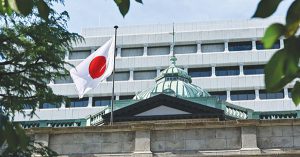Bloomberg
The Bank of Japan (BOJ) announced two additional rounds of unscheduled bond-purchase operations, fighting back against traders betting it will further relax its yield-curve control policy.
The central bank offered to buy unlimited amounts of two- and five-year notes at a fixed yield, along with 600 billion yen ($4.5 billion) of one-to-10 year bonds. That was on top of the unplanned operations and a daily offer to buy 10-year debt at 0.5%, the top of its current yield target.
The additional purchases illustrate the conundrum facing Japanese policy makers. They doubled the ceiling for 10-year yields this month to help improve market functioning, but that has only spurred more
bets that the central bank will lift the cap further or scrap it
altogether.
Funds from BlueBay Asset Management to Schroders Plc say they have added to short positions on Japanese bonds, with some also buying the yen.
“Markets will keep testing
the BOJ’s limits,†said Christopher Wong, a strategist at Oversea-Chinese Banking Corp in
Singapore.
“The YCC tweak could just be the beginning of more to come.â€
Yields on bonds not covered by the operations rose, with the 20-year yield climbing 5 basis points to 1.32%. The yen strengthened 0.5%.
“We are aware of the possibility that the BOJ will revise the yield-curve control in January,†said Yuji Saito, a senior advisor at Credit Agricole CIB’s global market division in Tokyo.
The BOJ may raise the yield ceiling to 0.75%, or change the target tenor to the five years note, he said.
The BOJ conducts two kinds of bond-buying operations, one with a fixed yield and the other for a fixed amount. In the former it buys an unlimited quantity of debt at a predetermined yield. In the latter, it purchases a fixed amount of bonds at the prevailing market yield.
These ad-hoc operations have boosted purchases to about ¥16 trillion in December, close to the monthly record high set in June.
The amount may balloon even further as the BOJ plans to increase scheduled bond buying by 23% in the first quarter. Japan’s core inflation gauge is climbing at the fastest pace in four decades, piling further pressure on the central bank.
 The Gulf Time Newspaper One of the finest business newspapers in the UAE brought to you by our professional writers and editors.
The Gulf Time Newspaper One of the finest business newspapers in the UAE brought to you by our professional writers and editors.
